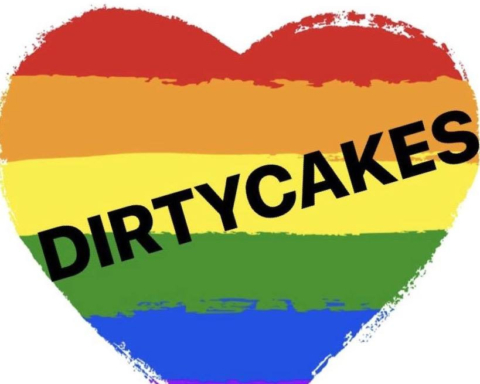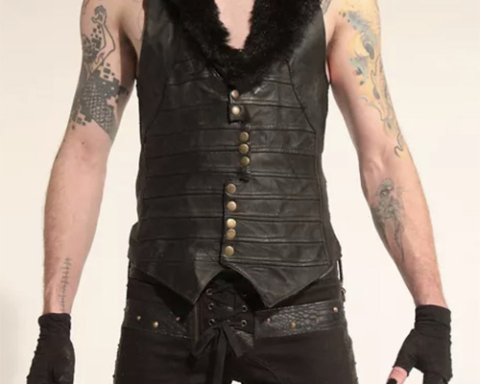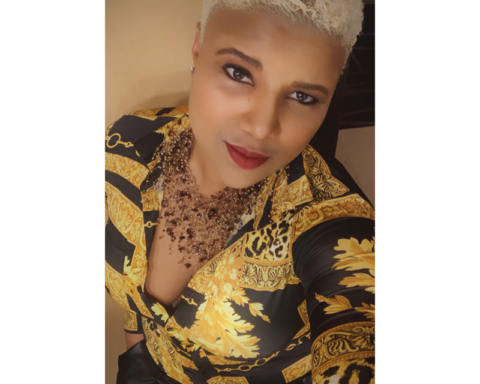A Basic Guide for Allies Dedicated to Supporting Gender Diversity
Phew! We made it to 2019!
2018 was an iconic year for transgender rights and generally elevating the visibility of gender diversity. We have a brand new year ahead to tackle trans and broader LGBTIQ+ rights and we need you allies to become more involved in educating folks more than ever. We need you to tackle the prejudices you hear and see on a daily basis. There is no reason for allies to NOT be up to scratch with the latest issues related to gender.
After perusing the internet looking for resource guides for allies, I quickly realized there was little out there in terms of concrete basics. The majority of e-guides provide foundational knowledge for tackling everyday learning from the LGBTIQ+ community: listen, don’t make assumptions and do your homework. While all of this is true, it would be useful to give you information on the typical scenario that a gender variant or LGBTIQ+ person has with a cisgender and heterosexual person and how to tackle these issues when they come up.
It is important to roll into the new year understanding some “hot” topics specifically related to gender diversity. What do I do when I make a mistake with pronouns? Where can I go to learn more when Google isn’t providing the information I am looking for? In order for all you allies to be on the same page, here is a basic resource guide with five things to leave you less confused, more inclusive and most importantly #GENDERWOKE in 2019 and beyond.
1. “Wait, ‘THEY’ and ‘THEM’ is a singular pronoun?”
Picture this situation, you have plans to go out tonight and your friend tells you that they will bring another friend with them. In the evening you two are introduced. You mistakenly refer to this person as a girl when you compliment them on their outfit: “I like your outfit girl”. The friend is comfortable enough to correct you: “ I am not a girl. I use they/them pronouns by the way”. You turn red in confusion and you don’t know what to do. It’s okay, don’t panic.
The pronoun “they” is used for individuals who do not identify within the binary genders of man and woman; for individuals who identify as both or neither. The umbrella term for this identity is known as non-binary. Under the non-binary umbrella there are multiple identities that branch out from it such as agender, genderqueer and genderfluid. Such identities do not fit into the gender binary nor do they identify with a fixed gender. Historically, “they” and “them” pronouns have been around for a while and we even use “they” and “them” today when referring to a stranger. For example, “I am expecting the manager to email me this week. But they never mentioned a specific day”.
Now let’s get back to that bar situation. What do you do now? All you have to respond with is, “ah okay, sorry about that-noted!”. Move on, don’t make a big deal about it and start using the correct pronoun. Here are some examples of how to put “they” and “them” into action:
● Wow, I love their hair.
● I told them I would buy them a drink.
● They are a really nice human.
It may take some getting used to. So, what can you do in the meantime? Take a deep breathe and think about the pronoun before you start speaking. If you are having difficulties then address the person using their name first. For example, “Sam ordered a drink. Sam said they will come to join us after”. On another note, have you noticed how many times I have used “they” and “them” in this section!?
To learn more about “they” and “them” pronouns check out this informative video on Youtube!
2. “Help, I need to find gender neutral baby clothes. Is that even a thing!?”
Your friend just had a baby and has announced that they are only accepting gender neutral clothes as gifts. From your experience it has been difficult to find gender neutral clothes for children. In fact, you have never even thought about it when going shopping for your own children. EVERYTHING seems to be pink with flowers (for girls) or blue with space ships (for boys), what do I do?!
In the children’s clothing section you can usually find colors that are not blue or pink. Try going for colors such as white, grey, yellow, green and orange. If you cannot find alternate colors you could mix and match from both the “boys” and the “girls” section. Why not grab a dinosaur shirt from the “boys” section and a pair of purple leggings from the “girls” section? If you have time to shop then look at online options. More companies are coming out with gender neutral clothing lines for children. If you are crafty then try embarking on a DYI project: knitting, sewing or putting together your own creation. Think about clothes that do not embody stereotypical gender categories. Spiderman isn’t a “boys” thing and on the flipside Barbie isn’t a “girls” thing.
Gender diverse clothes for kids are great because it means parents aren’t imposing a specific gender role or mode of expression on their child. It leaves room for freedom of expression and creativity while allowing the child to explore who they are and what they like with time. Don’t talk your friend out of it- just go with it. Trust they have made the right decision and challenge yourself to think ‘outside the binary’. Remember, none of these items have a gender unless you have prescribed it one.
For some ideas on gender neutral children’s clothes and where to find them click here!
3. “Hello Ladies!” and other gendered terms to scrap in 2019.
How many times have you walked into a shop only to be greeted with “hello ladies” or “hello guys” ? Have you been at the theatre when the host addresses the crowd as “ladies and gentlemen”? These phrases fail to recognize non-binary identities. That is, if you do not identify as wholly a man or a woman you are left out. Many allies can be vigilant in learning pronouns but may revert to traditional language when addressing a group of individuals. This language is not inclusive of all genders. The thing is, you cannot just “tell’ how someone identifies just by looking at them. So it’s better to caution on the safe side. If you are a public speaker, someone who works in broadcasting or television, this will come in handy. Viewers will also be impressed by how aware you are. The people who aren’t tuned in to that kind of stuff won’t notice your gender neutral language anyways.
Here are some gender neutral phrases you can incorporate into your everyday vocabulary:
Hello everyone!
Welcome folks!
Greetings to all of you!
When addressing people you could try these phrases:
The person in the orange sweater is next.
The two folks are paying with credit card.
You are a lovely human being!
For more information on gender neutral language download a gender neutral language sheet here!
4. Don’t judge a book by its cover.
It has become a habit for us to step into public spaces and quickly categorize people. You pass whom you think are undoubtedly “businessmen” and “waitresses”. You see someone with facial hair and instinctively use the male pronoun (he/him) to address them. That is because people generally look at physical features (body shape, facial hair and height) and aesthetic expression (clothes, make-up and hair style) to determine a person’s gender. In 2019, it’s not acceptable to try and “figure out” what someone is. Identity is too complex to neatly package. The next time you are with someone who is trying to make a judgment let them know about these three things first:
1.Gender identity is the gender that people FEEL they are. This gender may not align with the one that they were assigned at birth. You cannot assume someone’s gender based on their physical characteristics.
2. Gender expression is how someone presents aesthetically such as clothing, make-up and a particular hairstyle. Gender expression also includes particular mannerisms and behaviors associated with a particular gender. These expressions are not always ‘assigned’ to a particular gender. For example, a non-binary person may have facial hair and wear boxer briefs but they do not identify as a man. Similarly, a man may wear a dress and still identify as a man.
3. Gender does not determine sexual orientation! Just because someone aesthetically appears a certain way it doesn’t mean you can pigeonhole them into a sexual orientation. For example, just because you meet a man who wears nail polish it does not mean he is gay.
If you want to impress your friend a step further, then show them this awesome visual guide to understanding gender, sex and sexuality as a spectrum!
5. “So who is the man in your relationship?”: Gender roles are sooooo NOT 2019.
The last tip for you to practice this year is to stop categorizing queer relationships into binary boxes. For example, it is not so clean cut to assume that in a lesbian relationship, one person fulfills the “male” role (breadwinner and masculine presenting) and another the “female” role (cooks, cleans and has long hair). It is a harmful association to make. When we use this heteronormative viewpoint, it means that we take stereotypically straight relationships between “men” and “women” to be the universal norm. If you are straight you will automatically assume that others are as well and this is not true! Moreover, gender roles aren’t so black and white. In a queer relationship, individuals are not always striving to “perform” the typical “male” and “female” roles. When you ask such a question it also can be indicating invasive questions regarding roles in a sexual relationship. There are more ways to have sex outside of the stereotypical straight narrative! Get your head out of the binary!
Here are some things to think about:
1. Don’t ask someone about their respective “boyfriend” of “girlfriend”. If you have to ask, then use the terms “partner”, “spouse” or “significant other”.
2. Just because someone has kids don’t assume they are straight.
3. Before you start forming a typical heterosexual narrative of someone in your mind. Think of other ‘gender variant’ forms of constructing this narrative. For example, a co-worker at work told you they have a partner. Maybe their partner is non-binary.
Challenge your assumptions!
Check out this video on heteronormativity. Don’t worry, here is another explanation of that extra long word.
So there you have it folks! A useful starter guide for all you allies who are working towards being #GENDERWOKE. Remember, don’t be afraid to ask questions IF another person is willing to share information with you. Ultimately, it is up to you to do your homework and to stay up to date. Hopefully, this guide will have all the other allies coming to your yard for some WOKE advice.
Want to explore more and don’t know where to start?
Check out these amazing LGBTIQ+ YouTubers!
Foundational LGBTIQ+ topics and non-binary experience by Ash Hardell.
Topics related to Agender and Asexual identities by Chandler Wilson.
Trans related topics primarily related to transfeminine identities by Riley J Dennis.
Transmasculine related topics and LGBTIQ+ sex education by Chase Ross.
Intersex 101 with Pidgeon Pagonis.
Genderqueer topics by Ashley Wylde.
Did you express great allyship recently? Share your experience on social media using the hashtag #GENDERWOKE.
For more resource enquiries email me!
Until next time,
Santina Sorrenti






